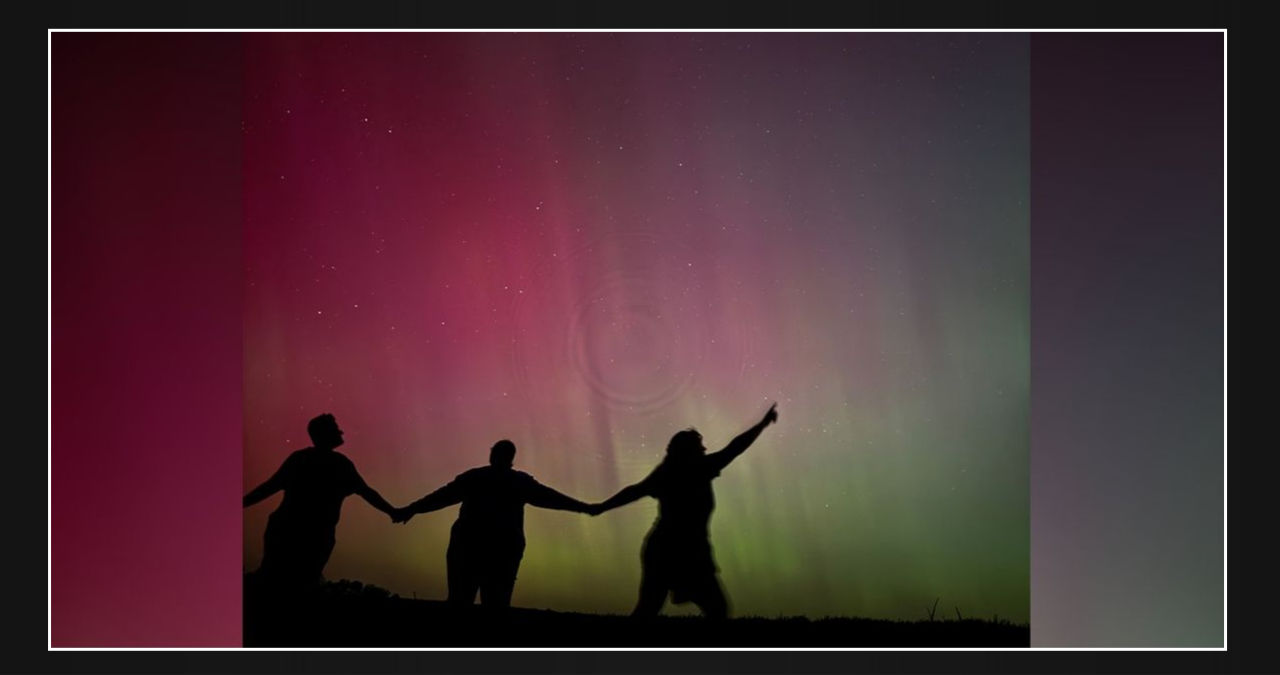According to federal weather officials, the likelihood of witnessing the Northern Lights display is high for individuals residing in the Midwest this week. This increase in activity is due to a storm in space that is becoming more active.
The SWPC, also known as the NOAA’s Space Weather Prediction Center, has recently announced a G3 geomagnetic storm watch that will take place from July 29th to July 31st. As a result of this event, people residing in the United States may witness a surge in aurora activity. The lights are expected to become visible during nighttime hours in numerous northern states, as well as some parts of the lower Midwest region.
The SWPC has reported an increase in solar activity leading to multiple coronal mass ejection (CME) events. As a result, Earth has been hit by some of these ejections, which carry the essential solar particles required for the formation of the awe-inspiring Northern Lights display. This alert has been issued to notify of the occurrence.
According to NASA Solar System Ambassador Brenda Culbertson, the sun has recently been active with flares and coronal mass ejections. As a result, Japan has already experienced a shortwave radio blackout due to energy received by Earth. If the anticipated increase in geomagnetic activity occurs, it may reach mid latitudes, leading to the possibility of aurora sightings in northeast Kansas. However, like terrestrial weather, space weather is unpredictable, and scientists can only do their best to monitor and predict its effects.
According to the SWPC’s G3 alert, there may be a chance of increased solar activity in the upcoming days, which could lead to more aurora events. The extent of this activity, however, depends on various factors such as the number of CMEs recorded and their direction upon eruption.
In May, Kansans were treated to a spectacular and unusual sight of the northern lights that became visible over a vast area of the state. This stunning phenomenon was caused by a massive sunspot that erupted and sent a barrage of solar particles towards Earth.
According to Culbertson, the colors in the sky along the northern horizon are more visible the farther north a person is. The intensity of activity determines how high the colors will be seen, and they may even be visible farther south.
If you’re hoping to capture some stunning photos of the northern lights this week, Culbertson suggests finding a prearranged spot to visit on the night of July 30-31. It’s worth noting that these colors can be quite faint, but cameras are often able to pick them up. To increase your chances of detecting the aurora’s colors in the night sky, try using a 15-30 second exposure when taking your photos.
Geomagnetic storms have a scale of G1 to G5, with G5 representing the most extreme case. The May storm was initially ranked as a G3 but quickly increased to a G4 as the severity of the sunspot’s eruption became apparent.
To give you a better understanding, the severity of geomagnetic storms is measured by the SWPC on a scale ranging from G1 to G5. A G1 storm may cause slight disruptions in satellite communications and minor fluctuations in power grids. On the other hand, G5 storms have the potential to cause massive blackouts or even lead to a complete collapse of power grids.






